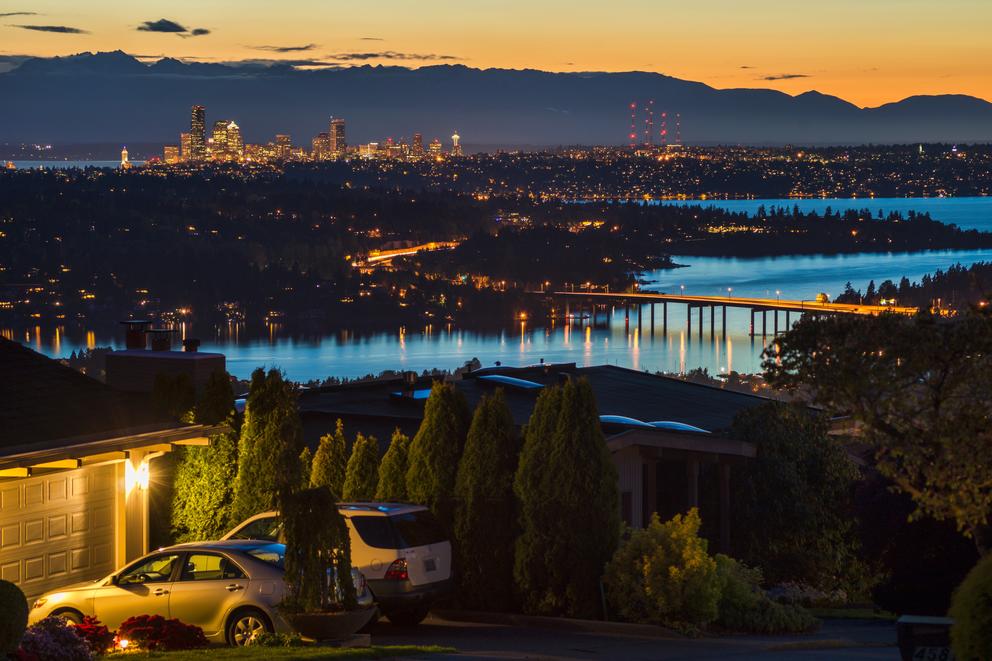Lately it seems to be quite the Game of Thrones between cities and suburbs, with claims for winners and losers.
Certainly, many people — from millennials to baby boomers — are seeking out neighborhoods within older cities that have both charm and liveliness. However, a recent article in the New York Times suggests that it is a myth to believe cities are seeing a resurgence in popularity. The article argues that many suburbs are as strong as ever and continuing to grow while Seattle, with its growing population and density, is more an exception — one that helps mislead people into believing that cities are the big thing now.
But do we really have to see it as a situation in which we have to crown a winner?
Certainly, Seattle’s movement toward greater density is abundantly evident. In the years since the Great Recession a number of neighborhoods have been radically transformed with multistory apartment buildings lining both sides of major streets. Large buildings built for Amazon seem to be rising up all over the north end of downtown. The change is palpable.
In fact, Seattle is one of about a dozen metro areas in the country that have seen increases in density, albeit none as great as here. Every region has its own blend of factors that have contributed to that, but here the phenomenon is likely the result of several forces converging in the same, short period of time.
It’s remarkable how corporations, like Amazon and Microsoft, have been expanding their work forces. The region has invested heavily in transit, which allows many people to live in close proximity without their own vehicles.
Consistently, Seattle city voters have approved public investments in not just transit but parks, community centers, libraries and housing. Twenty-five years ago, the state Growth Management Act gave rise to policies that directed growth into certain designated centers throughout the Puget Sound region. These have essentially worked — deliberately directing density away from farm lands and forest lands.
All of these have brought Seattle to a position where it is widely considered as a desirable place to live.
A noticeable increase in Seattle’s density, statistically speaking, was probably not difficult to achieve given that its previous density was comparatively modest compared with most other larger cities. Seattle is not alone in this trend. Chicago, Portland, Minneapolis, Boston and other cities have seen similar changes. Even some places like Atlanta, previously known for horizontal expansion, are now seeing dense urban development in locations that were not long ago all but abandoned.
As with the New York Times piece, articles in the popular press have long been fixated on the notion that there is a sort of competition between cities and suburbs, with one or the other losing in some massive game of growth. The distinction in terminology between cities and suburbs, as I have argued, is increasingly irrelevant.
There are cities of many different sizes; some are growing rapidly, others less so. Census figures over the past several decades have been consistently showing increasing numbers of people living in urban places; most of the country now lives in cities — all possessing, to varying degrees, urban qualities.
Interestingly enough, some of the most urbanizing communities are those that not many decades ago were low-density locations of white flight from central cities. In many metro regions, these inner-belt cities are now bursting with new housing, a wide diversity of cultures, and lively main streets with locally owned shops, services and restaurants. Increasingly, these former bedroom suburbs, with less expensive housing and available jobs, are being discovered immigrant families looking to make a good life.
In this region, we can see this transformation in multiple locations. Bellevue is the most prominent example here, but cities like Shoreline, Kent and Federal Way are going through similar changes. These cities are all investing in civic infrastructure, parks, cultural centers, and trails.
The social, physical and economic changes we are seeing throughout the region, as well as elsewhere in the country, are far more complex than can be reduced to a simple city versus suburb model. People choose to live in places as a result of many highly personal factors, including the cost of housing, access to transportation, proximity to parks and preference for different ways of living. We now have a spectrum of city types that offer different mixtures of attributes. The previous notion of city versus suburb is becoming increasingly irrelevant.
Regardless of their size, cities offer shared benefits in the form of parks, health care, education, and higher paying employment. This is a continuation of long-term shifts in the service sector as well as in research and technology. The important thing is that choices are available to suit different needs, family types and personal preferences. Density is certainly one measure of urbanity, but places of diversity, urbanity, and choice can be found in lots of locations — whether in large cities like Seattle, moderate-sized cities like Bellingham or small towns like Gig Harbor.
There are cities around the region — from Bellingham to Olympia and numerous places in between — that are all experiencing development. They offer interesting places to live, vibrant neighborhoods and revived downtowns. That Seattle is getting denser is certainly remarkable, but so is the story of all these other splendid cities in King County and beyond that are remaking themselves. This has become an urban region, with many choices in types of communities to live in.
After all, density in itself has little value to most people; it’s how it is combined with public spaces, transit and services that makes the difference.



